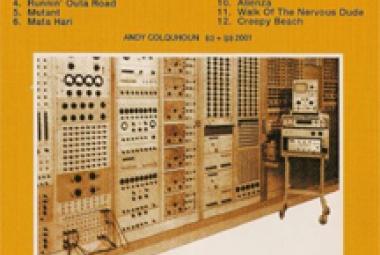Renaissance – Renaissance (1969): Despite their many hit songs during the height of the British Invasion, what most people know about the Yardbirds – assuming they know the band at all – is that their lead guitarists were, successively, three of the greatest guitar players in the history of British rock: Eric Clapton, Jeff Beck, and Jimmy Page. Others might know that Led Zeppelin arose from the ashes of the Yardbirds after essentially everyone left the band except Jimmy Page. Also, the consensus is that the first two (true) psychedelic rock hit songs are “Shapes of Things” by the British band the Yardbirds, and “Eight Miles High” by the American band the Byrds; both singles were released in early 1966. The core of the Yardbirds though is Paul Samwell-Smith (bass guitar and producer, and also the band’s lead songwriter), Keith Relf (vocals and harmonica), Chris Dreja (bass and rhythm guitar), and Jim McCarty (drums). Together with original lead guitarist Anthony “Top” Topham, the band originally assembled in May 1963 under the name the Blue Sounds before settling on the Yardbirds, a slang term for hobos waiting around for a freight train, and also a nickname for legendary jazz musician Charlie Parker. I have a Yardbirds CD called BBC Sessions that I fear might be lost to Hurricane Katrina; it collected interviews and songs that had been broadcast by BBC in the later years of the band’s career. Numerous such BBC Sessions had been made for some of the biggest British bands; though in many cases, the early years’ Sessions were lost, since unaccountably, BBC simply taped over them. One interview that I recall, I assume with Paul Samwell-Smith, talked about the intricate development of “Still I’m Sad” that features droning music, arty lyrics and a small choir accompanying the band. “Still I’m Sad” is the only song on their second American album Having a Rave Up with the Yardbirds (1965) that was composed by the bandmembers. When asked during the interview whether he was trying to make a ground-breaking or artistic statement, he said, no, he was just trying to make a good “B” side. That really surprised me; I hadn’t thought that most bands put a lot of thought into their “B” sides. I had noticed over the years that even many of the Rolling Stones’ “B” sides were well below the quality of the hit side. The bands that were started later by bandmembers in the Yardbirds also illustrate the depth of the band; besides Led Zeppelin, they include Renaissance, Illusion, Box of Frogs, and Stairway. Renaissance was formed in 1969 by the psychedelic half of the Yardbirds, Keith Relf and Jim McCarty, as an intriguing amalgam of progressive rock and folk rock with classical and jazz elements. Other bandmembers in their original line-up include John Hawken, Louis Cennamo, and Keith Relf’s sister Jane Relf. Female lead vocals were still pretty rare in rock music in the late 1960’s, so Jane Relf’s occasional ethereal vocals helped give Renaissance a real identity. Renaissance is the debut album by Renaissance, and their only early album to be released in the U.S.; ex-Yardbird Paul Samwell-Smith was the producer of the album. Because of their Yardbirds connections, Renaissance had some success in touring, though their new style of music did not always go down well with audiences. As the band was disintegrating, Renaissance prepared a second album called Illusion (1971) that was only released in West Germany. A completely new line-up of Renaissance was in place by the time that their third album Prologue (1972) came out, including a new female vocalist, Annie Haslam. At the time of his death in 1976, Keith Relf was in the process of assembling the original bandmembers in Renaissance for a new band; the remaining musicians then formed a band called Illusion (presumably named for Renaissance’s second album Illusion), whose first album was called Out of the Mist (1977).





